As the main power source of new energy vehicles, power batteries are of great importance to new energy vehicles. During the actual use of the vehicle, the battery will face complex and changeable working conditions. In order to improve the cruising range, the vehicle needs to arrange as many batteries as possible in a certain space, so the space for the battery pack on the vehicle is very limited. The battery generates a lot of heat during the operation of the vehicle and accumulates in a relatively small space over time. Due to the dense stacking of cells in the battery pack, it is also relatively more difficult to dissipate heat in the middle area to a certain extent, exacerbating the temperature inconsistency between the cells, which will reduce the charging and discharging efficiency of the battery and affect the power of the battery; It will cause thermal runaway and affect the safety and life of the system.
The temperature of the power battery has a great influence on its performance, life and safety. At low temperature, the internal resistance of lithium-ion batteries will increase and the capacity will decrease. In extreme cases, the electrolyte will freeze and the battery cannot be discharged. The low-temperature performance of the battery system will be greatly affected, resulting in the power output performance of electric vehicles. Fade and range reduction. When charging new energy vehicles under low temperature conditions, the general BMS first heats the battery to a suitable temperature before charging. If it is not handled properly, it will lead to instantaneous voltage overcharge, resulting in internal short circuit, and further smoke, fire or even explosion may occur. The low-temperature charging safety problem of electric vehicle battery system restricts the promotion of electric vehicles in cold regions to a large extent.
Battery thermal management is one of the important functions in BMS, mainly to keep the battery pack working in an appropriate temperature range at all times, so as to maintain the best working condition of the battery pack. The thermal management of the battery mainly includes the functions of cooling, heating and temperature equalization. The cooling and heating functions are mainly adjusted for the possible impact of the external ambient temperature on the battery. Temperature equalization is used to reduce the temperature difference inside the battery pack and prevent rapid decay caused by overheating of a certain part of the battery.
Generally speaking, the cooling modes of power batteries are mainly divided into three categories: air cooling, liquid cooling and direct cooling. The air-cooling mode uses natural wind or cooling air in the passenger compartment to flow through the surface of the battery to achieve heat exchange and cooling. Liquid cooling generally uses an independent coolant pipeline to heat or cool the power battery. At present, this method is the mainstream of cooling. For example, Tesla and Volt both use this cooling method. The direct cooling system eliminates the cooling pipeline of the power battery and directly uses refrigerant to cool the power battery.
1. Air cooling system:
In the early power batteries, due to their small capacity and energy density, many power batteries were cooled by air cooling. Air cooling (PTC Air Heater) is divided into two categories: natural air cooling and forced air cooling (using fan), and uses natural wind or cold air in the cab to cool the battery.
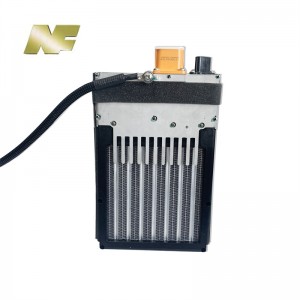
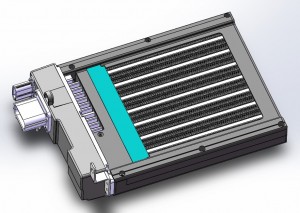
Typical representatives of air-cooled systems are Nissan Leaf, Kia Soul EV, etc.; currently, the 48V batteries of 48V micro-hybrid vehicles are generally arranged in the passenger compartment, and are cooled by air cooling. The structure of the air cooling system is relatively simple, the technology is relatively mature, and the cost is low. However, due to the limited heat taken away by the air, its heat exchange efficiency is low, the internal temperature uniformity of the battery is not good, and it is difficult to achieve a more precise control of the battery temperature. Therefore, the air-cooling system is generally suitable for situations with short cruising range and light vehicle weight.
It is worth mentioning that for an air-cooled system, the design of the air duct plays a vital role in the cooling effect. Air ducts are mainly divided into serial air ducts and parallel air ducts. The serial structure is simple, but the resistance is large; the parallel structure is more complex and takes up more space, but the heat dissipation uniformity is good.
2. Liquid cooling system
Liquid-cooled mode means that the battery uses cooling liquid to exchange heat (PTC Coolant Heater). Coolant can be divided into two types that can directly contact the battery cell (silicon oil, castor oil, etc.) and contact the battery cell (water and ethylene glycol, etc.) through water channels; at present, the mixed solution of water and ethylene glycol is used more. The liquid cooling system generally adds a chiller to couple with the refrigeration cycle, and the heat of the battery is taken away through the refrigerant; its core components are the compressor, the chiller and the electric water pump. As the power source of refrigeration, the compressor determines the heat exchange capacity of the entire system. The chiller acts as an exchange between the refrigerant and the cooling liquid, and the amount of heat exchange directly determines the temperature of the cooling liquid. The water pump determines the flow rate of the coolant in the pipeline. The faster the flow rate, the better the heat transfer performance, and vice versa.
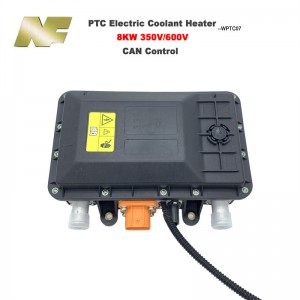
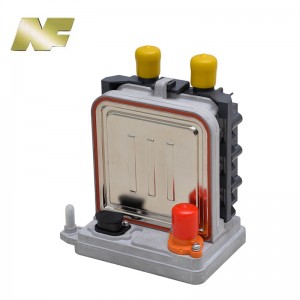
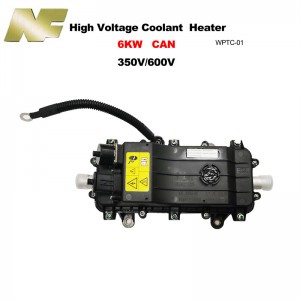
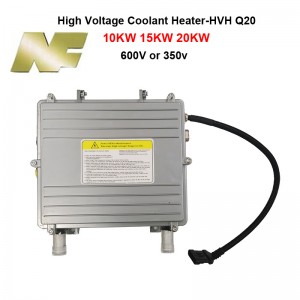
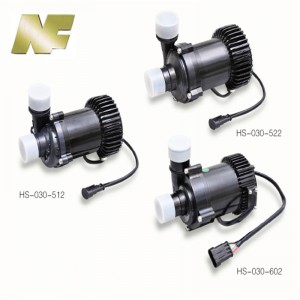
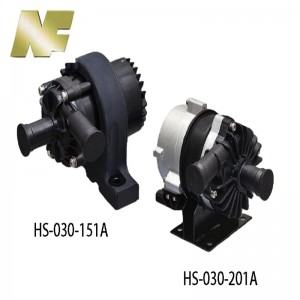
Post time: Aug-09-2024




